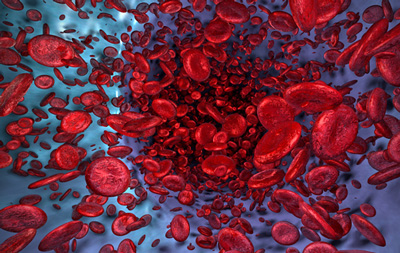BPL’s Coagadex approved in the EU for hereditary factor X deficiency
Posted: 30 March 2016 | | No comments yet
Coagadex is indicated for the treatment and prophylaxis of bleeding episodes and for perioperative management in patients with hereditary factor X deficiency…


The European Medicines Agency has granted marketing authorisation for Bio Products Laboratory’s (BPL) Coagadex.


Coagadex is indicated for the treatment and prophylaxis of bleeding episodes and for perioperative management in patients with hereditary factor X deficiency. Coagadex is the first and only treatment licensed specifically for this rare bleeding disorder in Europe.
Factor X deficiency is a rare and serious condition caused by not having enough of the Factor X protein in the blood; this protein plays a crucial role in coagulation (blood clotting) which helps patients stop bleeding. People with Factor X deficiency are at increased risk of bleeding or experience excessive or prolonged bleeding. Severely affected individuals, usually children, have an increased risk of bleeding inside the brain, in the lungs or in the gastrointestinal tract, which can be life-threatening. Hereditary Factor X deficiency is very rare and affects approximately 700 patients in Europe.
A significant advance for patients
Commenting on the approval, Professor Flora Peyvandi, Director of Angelo Bianchi Bonomi Hemophilia and Thrombosis Centre, Professor of Internal Medicine- IRCCS Maggiore Hospital, University of Milan, said: “Until now, we have focused on treating Factor X deficiency with blood infusions of plasma or a concentrate of clotting factors. We have wanted a specific Factor X therapy to treat these vulnerable patients. Therefore, the approval of Coagadex in the EU today is a significant advance for patients.”
Dr Steve Austin, Haemophilia Centre Director of St George’s University Hospitals NHS Foundation Trust, London, added: “Having been involved in the clinical development programme of Coagadex, I am delighted that this therapy has now been approved. For the first time, patients with this rare bleeding disorder can receive a specific therapy that has been proven safe and effective in clinical studies.”
Approval based on two studies
Coagadex was approved based upon data generated from two open-label, multicentre, prospective studies.
The first study enrolled patients with moderate to severe hereditary factor X deficiency who were treated on-demand for spontaneous or traumatic bleeding episodes. The primary efficacy endpoints were pharmacokinetic measures including recovery rate and half-life, and secondary endpoints included overall assessment of efficacy and the number of infusions needed to treat a bleed.
The criteria for treatment success were satisfied in the study, and the pharmacokinetic parameters were consistent with previously published data.
Two patients in the study reported six adverse events considered possibly related to the medication: two events of fatigue in one patient, two events of infusion site erythema in one patient, and one of infusion site pain and back pain in each patient. There were no other drug-related adverse events, no serious drug-related adverse events, and no patients discontinued from the study due to adverse events.
The second study collected data on two surgical patients receiving Coagadex perioperatively. Surgical data from three patients in the first study was added and resulted in five patients undergoing seven surgical procedures. For all surgical procedures, Coagadex was assessed by the investigator as excellent in controlling blood loss during and after surgery. All patients undergoing major surgery were diagnosed with mild factor X deficiency. One patient with moderate deficiency and two with severe deficiency underwent minor procedures. No patients with moderate or severe disease underwent a major procedure. There were no treatment-related adverse events reported in surgical patients in the second study.
In both studies combined, the most common adverse events were infusion site erythema, infusion site pain, fatigue and back pain.




